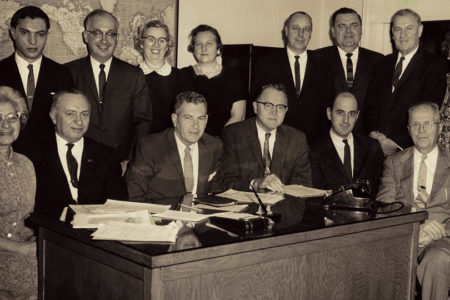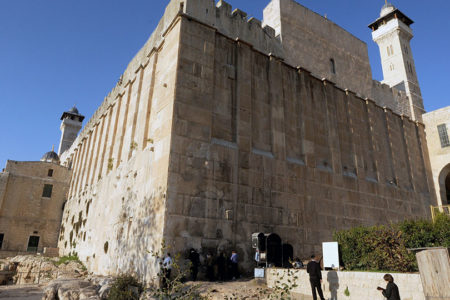Inextinguishable Israel
In a world stricken by the compulsion to forget and plagued with perpetually erratic behavior, it is not surprising that some people no longer see Israel as a little David struggling for survival, but rather as a land-grabbing, Goliath-like oppressor of a weak and stateless people. Much of the reason for this radical turnabout lies in the shameless denial or manipulation of facts. It also is a result of Israel’s astounding success.
Against all odds, this tiny Jewish state rose from the sands of the Middle East to global distinction as an economic, military, social, and democratic power unequalled among the multitude of Arab oligarchies surrounding it.
Witness to a Miracle
In its beginning, we often heard Israel’s existence likened to a modern miracle. However, even that enigmatic and expansive assignation fails to articulate the scope of a reality with no historical landmarks by which to measure its immensity.
For millennia, a return of the Jewish people to their God-given homeland was viewed as a dream—an impossible fantasy, one might say. The Palestine of the late 1800s was a virtual wasteland sheltering a persistent remnant of Jews, scattered Bedouin encampments, and small Arab enclaves. During the 400 years of Ottoman-Turkish rule, absentee landowners controlled most of the land. Much of it was mosquito-infested swamp regarded as irredeemable and promising little more for intruders than a bout with malaria.
Jewry in dispersion was caricatured as a wispy-bearded wanderer, ever a mystery and never quite attaining acceptance or permanence among the nations of the Gentile world. For the wandering Jew, it seemed that Leviticus 26:36 charted the course:
And as for those of you who are left, I will send faintness into their hearts in the lands of their enemies; the sound of a shaken leaf shall cause them to flee; they shall flee as though fleeing from a sword, and they shall fall when no one pursues.
Caricature, however, is based on exaggeration. Though it contains elements of truth, it falls far short of reality. Jewish caricatures usually ignored the immense contributions Jewish individuals made to the world’s social, literary, economic, and scientific advancement, particularly in Western Europe. Assimilation was more the mood prior to the rise of Hitler’s brand of National Socialism in Germany following World War I.
But during the infamous trial in Paris of Jewish military officer Alfred Dreyfus on trumped-up charges of treason in 1894, Jewish journalist Theodor Herzl began to suspect that time was running out for the Jews of Europe. Herzl orga -nized the first World Jewish Congress in Basle, Switzerland, in 1897. Subsequently, a Jewish return to the Holy Land began. At first there was only a trickle of pioneers in the late 1800s. But by 1914 the Jewish population in Israel was approximately 90,000.
With the onset of the Nazi campaign of terror in the 1930s, it became increasingly obvious that the return had moved beyond the dream envisioned by Herzl and early Zionists to a desperate search for a place of national refuge.
What the early settlers found was less than inspiring. The Palestine of the 1800s and early 1900s was a wasteland. Travelers there agreed with American novelist Samuel Clemens (Mark Twain) whose dreary assessment in his book The Innocents Abroad reflected popular opinion: “Over it [Palestine] broods the spell of a curse that has withered its fields and fettered its energies….Palestine is desolate and unlovely.” French poet and statesman Alphonse de Lamartine uttered an epitaph, calling it “the tomb of a whole people.”
To say that the Jewish people who cleaned out the disease-breeding swamps, which they purchased in the Galilee region from indifferent landowners, faced a daunting challenge does not adequately state the case. With their bare hands and a few primitive implements, they cleared and drained the area, creating tillable fields while constantly fending off marauding bands of Arabs determined to kill them or drive them out.
Many in today’s high-tech world may appreciate the fact that these settlers and the vast majority of those who would follow them were not people of the soil. European Jews were much more accustomed to cities and scholarly pursuits than land development. Although theirs was a resurrection of the land, it was also a reinvigoration of spirit and focus.
As for cities, towns, and the facilities needed to stabilize the Promised Land, these were comparatively nonexistent. Jerusalem was, as it is today, the city on a hill; but it could hardly have been described as a thriving cosmopolitan magnet of progress. Perhaps the best example of what greeted the early immigrants was Tel Aviv—a mere strip of barren dunes on the Mediterranean beach south of the ancient city of Jaffa. The Jewish state literally was built from the ground up.
Seeing is Believing
Looking back at what Israel was and understanding what it has become in six short decades is a case study of how a remnant of Jewish people achieved what was almost universally accepted as unachievable. If the reconstitution of a nation scattered across the face of the planet for two millennia can be regarded as a miracle, then that restored nation’s achievements of the past 60 years can hardly be assessed as less.
Modern Israel, with its teeming cities, verdant agricultural groves and fields, and vibrant towns and villages is the pearl of the Middle East. It is no longer diseased swampland, arid dirt, rock-strewn acreage, and treeless expanses left over from ancient conflicts that ravaged the land.
On the contrary, Israel stands as a democratic bastion of inspiration. For the people of the region—whether they realize it or not—Israel is a beacon of their own hope for the future.
And while the mantra of the season calls for change and undefined illusions of hope, Israel—for all its flaws—is the embodiment of hope. How much better the world would be if it recognized that fact and honored and emulated Israel, rather than belittled it and, still worse, aided and abetted attempts to bargain it away.







